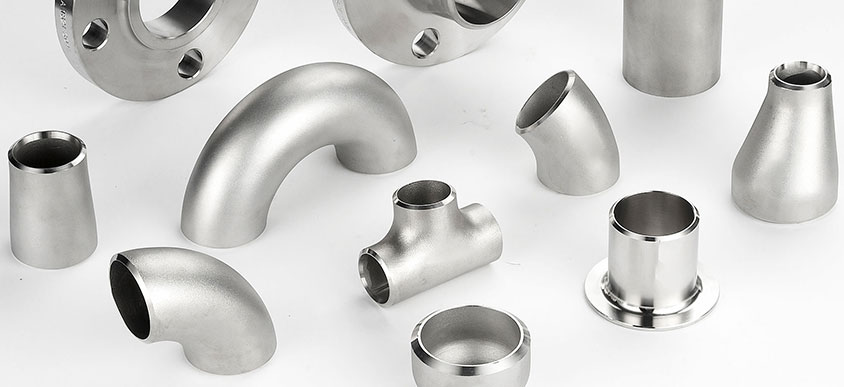Buttweld fittings play a pivotal role in piping systems, connecting pipes of various diameters, changing flow directions, and facilitating branching. These fittings, known for their strength, durability, and seamless finish, are widely used in industrial and commercial applications where reliability and high performance are crucial.
Here, we’ll explore the common applications of buttweld fittings and why they are indispensable in various sectors.
Oil and Gas Industry
The oil and gas industry operates under extreme conditions, including high pressures and temperatures. Buttweld fittings are ideal for these environments due to their:
- Strength and Durability: They can handle the rigors of oil extraction, refining, and transportation.
- Corrosion Resistance: Fittings made from stainless steel and other alloys resist corrosion caused by hydrocarbons and harsh chemicals.
- Leak Prevention: Their seamless construction minimizes the risk of leaks, crucial for maintaining safety in these systems.
Common uses in this sector include:
- Connecting pipelines in offshore drilling platforms.
- Transporting crude oil and natural gas.
- Refineries and processing plants.
Power Plants
Power generation facilities rely on buttweld fittings for their ability to withstand high temperatures and pressures in steam, gas, and nuclear systems.
- Steam Distribution Systems: Buttweld fittings are used in boilers and turbines to maintain a robust and secure connection.
- Cooling Systems: They facilitate the flow of water or other cooling agents in power plants.
- Nuclear Plants: Their reliability and resistance to radiation make them suitable for critical piping in nuclear reactors.
Chemical and Petrochemical Industry
In chemical processing plants, the need for secure, durable, and chemical-resistant piping is paramount. Buttweld fittings are ideal for handling:
- Acidic and Alkaline Substances: Their corrosion-resistant materials prevent deterioration and contamination.
- High-Pressure Reactions: They can sustain the demands of high-pressure chemical reactions.
- Temperature Variability: These fittings function reliably in environments with extreme temperature fluctuations.
Applications include reactors, distillation units, and storage tank connections.
Food and Beverage Industry
Hygiene and cleanliness are critical in food and beverage production. Buttweld fittings are widely used due to their:
- Smooth Surface Finish: Seamless construction reduces the risk of bacterial buildup.
- Sanitary Designs: Stainless steel buttweld fittings meet hygiene standards for food-grade applications.
- Resistance to Corrosion: Essential for handling food-grade chemicals and cleaning agents.
Typical applications include pipelines for transporting liquids like milk, juices, and processed foods, as well as connections in breweries and dairy plants.
Water Treatment Systems
Water treatment plants require robust and long-lasting piping systems to manage water flow and filtration processes. Buttweld fittings are used in:
- Desalination Plants: For managing high-pressure systems used in water purification.
- Municipal Water Systems: In piping for water distribution and wastewater treatment.
- Irrigation Systems: For branching and connecting pipelines in large-scale agricultural projects.
HVAC Systems
Heating, Ventilation, and Air Conditioning (HVAC) systems in commercial buildings and industries rely on buttweld fittings for efficient fluid and gas transport. They are used to:
- Connect ducts and pipes in centralized cooling and heating systems.
- Optimize airflow and water circulation in large facilities.
- Provide leak-proof connections for chilled water and refrigerant lines.
Shipbuilding and Marine Applications
The marine industry requires materials that can endure saline environments and high pressure. Buttweld fittings are integral in:
- Ship Plumbing Systems: For transporting fuel, water, and waste.
- Offshore Platforms: Connecting pipelines in oil rigs and desalination plants.
- Marine HVAC Systems: Ensuring effective ventilation in ship interiors.
Pharmaceutical Industry
In pharmaceutical manufacturing, maintaining sterile conditions is vital. Buttweld fittings, especially those made of stainless steel, are used in:
- Piping systems for transporting purified water and chemicals.
- Cleanroom applications where contamination must be avoided.
- Bioprocessing systems that require seamless, hygienic connections.
Construction and Infrastructure
Commercial and residential buildings use buttweld fittings for:
- Plumbing systems, including water supply and drainage.
- Fire protection systems with robust and leak-proof pipelines.
- Gas supply lines for heating and cooking.
Aerospace Industry
In aerospace applications, buttweld fittings are preferred for their:
- Precision Engineering: They meet the stringent requirements for aircraft and spacecraft systems.
- High-Performance Materials: Alloys used in these fittings can withstand extreme conditions.
- Weight Efficiency: Seamless fittings contribute to reducing overall weight without compromising strength.
Applications include hydraulic systems and fuel transport systems in aircraft.
Advantages of Buttweld Fittings
- Seamless Design: Reduces stress concentration and improves flow efficiency.
- Longevity: Withstands harsh conditions, offering a long service life.
- Customizability: Available in a variety of materials, sizes, and shapes to suit diverse applications.
- Safety: Ensures secure connections, minimizing the risk of leaks and failures.
Conclusion
Buttweld fittings are a cornerstone of reliable and efficient piping systems in industrial and commercial settings. From power plants to food processing facilities, these fittings ensure seamless operation, safety, and durability.
For businesses in need of high-quality buttweld fittings, partnering with a trusted supplier is crucial to meet the demands of specific applications and ensure compliance with industry standards. With their proven reliability and versatility, buttweld fittings remain an essential component across various sectors.





